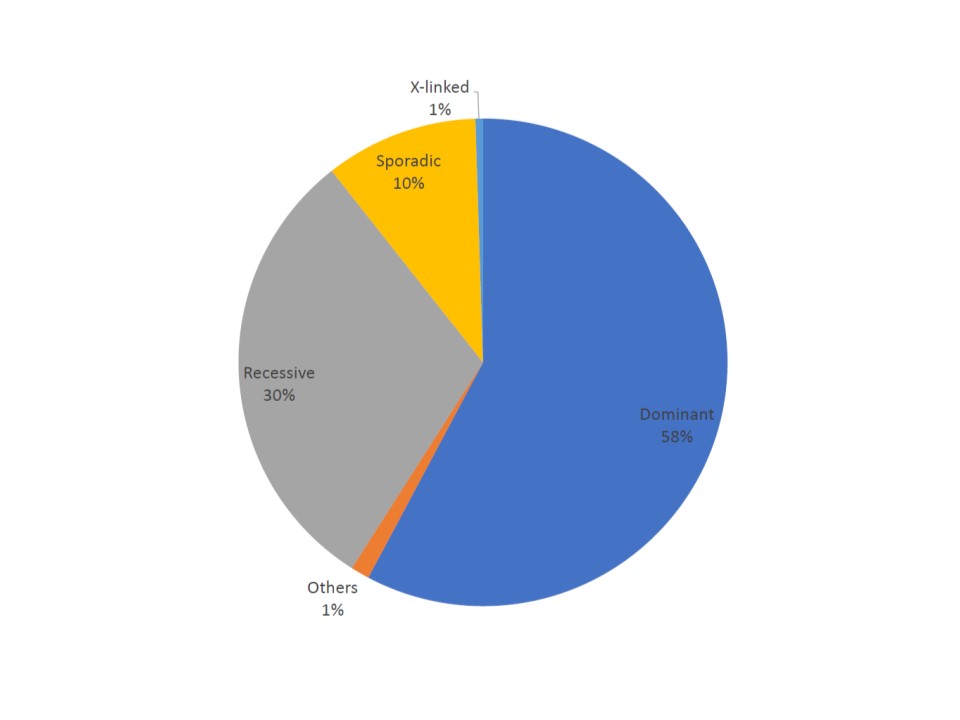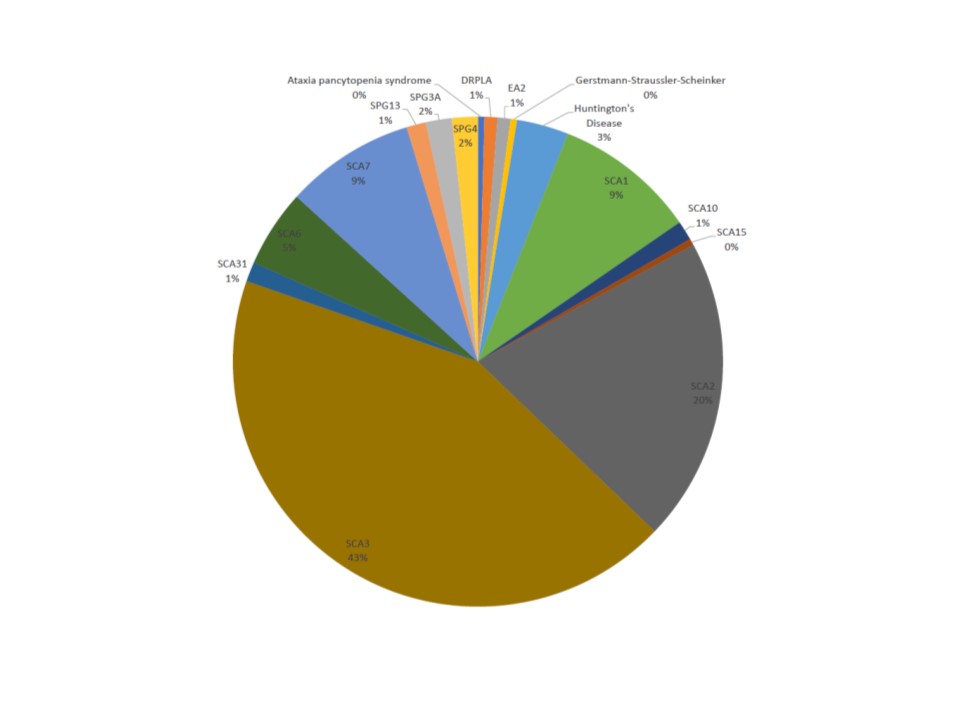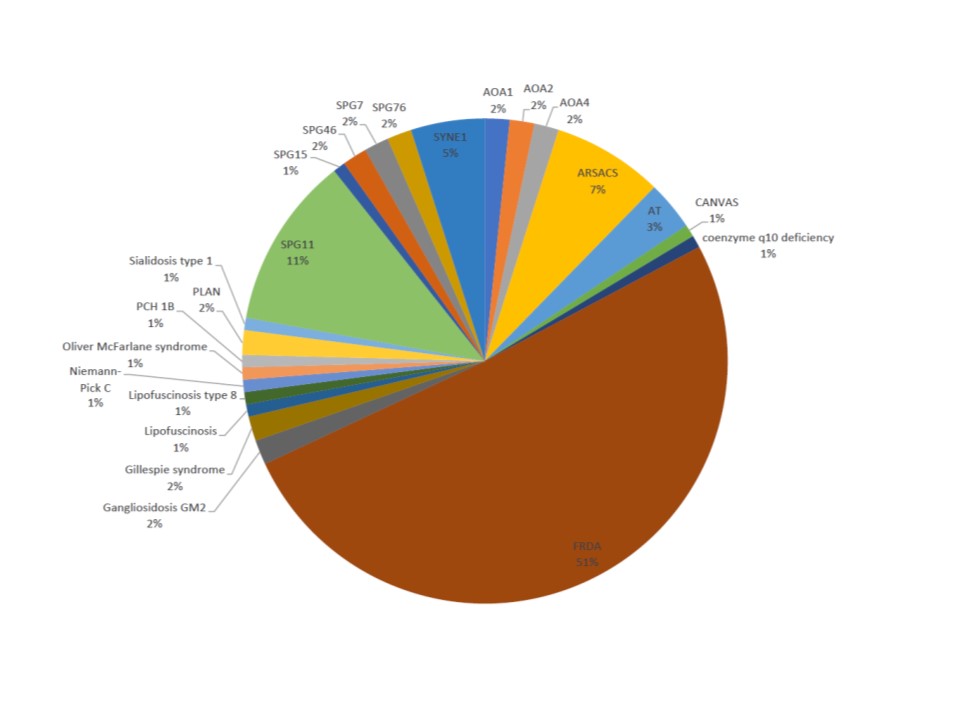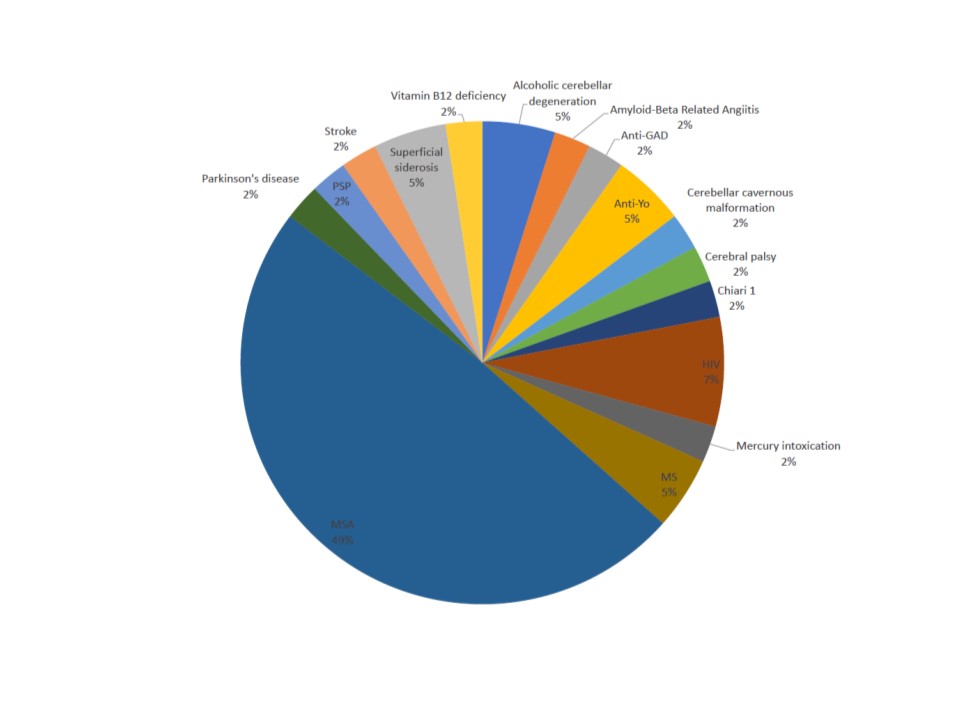Category: Epidemiology
Objective: To describe the historical demography of diagnosed ataxia cases made in a tertiary neurological outpatient clinic in Sao Paulo, Brazil.
Background: The term ataxia clinically denotes incoordination, and cerebellar ataxia syndromes can be classified as: genetic (autosomal dominant, autosomal recessive, congenital, mitochondrial, X-linked), sporadic or acquired. Besides, it can be a hallmark of other neurological disorders.
Method: We reviewed charts of patients who were being followed at the Ataxia Unit at Federal University of Sao Paulo, from January 2012 to December 2017. Patients had: (1) clinical and genetic diagnosis; (2) clinical diagnosis and family different patterns of inheritance; (3) clinical diagnosis and no familial similar cases (sporadic); (4) no definite clinical diagnosis. Incomplete charts at level of being impossible to confirm any specific disease were excluded. Results were presented as frequencies and percentages.
Results: Among the 920, 407 (44%) patients had their diagnostic confirmed by genetic testing or other pertinent investigations. They were divided into five groups [figure1]: Dominant (n=236, 58%), Recessive (n=123, 30%), X-linked (n=2, 1%), Sporadic (n=41, 10%), and Others (n=5, 1%). Here, we highlight the Dominant group [figure2] was composed by spinocerebellar ataxia type 3 (SCA3) (n=101, 43%), SCA2 (n=47, 20%), SCA1 (n=22, 9%), SCA7 (n=22, 9%) and SCA6 (n=12, 5%); the Recessive group [figure3] presented Friedreich ataxia (n=62, 51%), spastic paraplegia 11 (SPG11) (n=14, 11%) and autosomal recessive spastic ataixa of Charlevoix-Saguenay (ARSACS) (n=9, 7%); and the Sporadic group [figure4] had multiple system atrophy (MSA) (n=20, 49%).
Conclusion: To diagnose hereditary and sporadic ataxias remains a diagnostic challenging for the general neurologist. Furthermore, it often requires advanced molecular and genetic tests to confirm the diagnosis. To the best of our knowledge at the time of publication, this study represents the largest demographycal data about diagnostic confirmed cases of ataxia patients in South Amercica. Still, there is a need for a greater integration among local research groups.
To cite this abstract in AMA style:
B. Massuyama, M. Gama, F. Abrantes, F. Filho, F. Maggi, R. Salomao, J. Freitas, S. Costa, I. Raslan, G. Diaferia, P. Matos, V. Ciarlariello, C. Jaques, M. Moraes, J. Pedroso, O. Barsottini. Diagnostic Demography of the Ataxia Unit at UNIFESP: 12 years experience [abstract]. Mov Disord. 2020; 35 (suppl 1). https://www.mdsabstracts.org/abstract/diagnostic-demography-of-the-ataxia-unit-at-unifesp-12-years-experience/. Accessed April 3, 2025.« Back to MDS Virtual Congress 2020
MDS Abstracts - https://www.mdsabstracts.org/abstract/diagnostic-demography-of-the-ataxia-unit-at-unifesp-12-years-experience/




